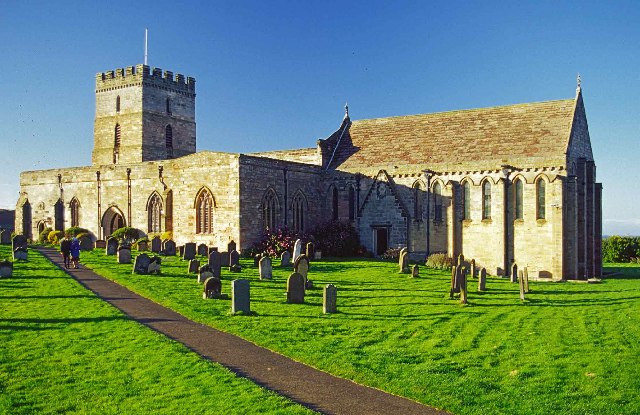More than a thousand years ago, a group of early Christian converts were buried near Northumberland’s Bamburgh Castle. After some years of excavation and study, they have been laid to rest for a final time, now in St. Aidan’s, a 12th-century church that replaced the original, believed to have been started by St. Aidan:
Some 110 sets of remains were excavated from the Bowl Hole – a known Christian burial site. The re-burial at Saint Aidan’s Church is said to be particularly poignant because the remains have been dated as being from between AD 650 to AD 700 – meaning they would probably have known Saint Aidan and heard him preach.
The Episcopal News Service published the report from the Anglican Communion News Service. St. Aidan’s foundations date back to the time of the original church, and one beam in the church may have been part of the original church.
Tradition suggests that this beam supported an awning, under which St Aidan died. A simple shrine marks the spot where this happened. The present church building dates back to the end of the 12th century. It is seen as the mother-church of the modern-day Diocese of Newcastle and central to the foundation of Christianity in England.
The June 26 reinterment service saw the remains, in zinc-lined boxes, placed in a new ossuary in the church’s crypt during a service which included a reading and a prayer in Old English.
Jessica Turner of the Northumberland Coast AONB Partnership, in the Chronicle:
“We could not rebury in the dunes as they are shifting and are a site of special scientific interest and a Special Protection Area. We wanted the reinterrment to be in consecrated ground because these were likely to be early Christian burials.”
Study of the bones and teeth gave researchers an idea of their geographic origins:
Their physical size, the apparently rich diet and the close relationship of the burial ground to the palace, has led to the conclusion that they were high status individuals associated with the court of King Oswald.
Scientific analysis of their teeth shows that few grew up in the immediate area of the castle. Many were from the wider British Isles with Western Scotland and Ireland well represented, probably due to the close early connection of the Northumbrian church with the religious centre of Iona.

